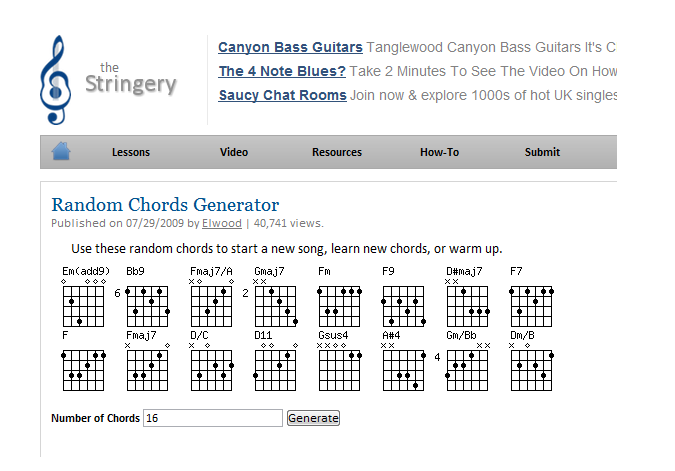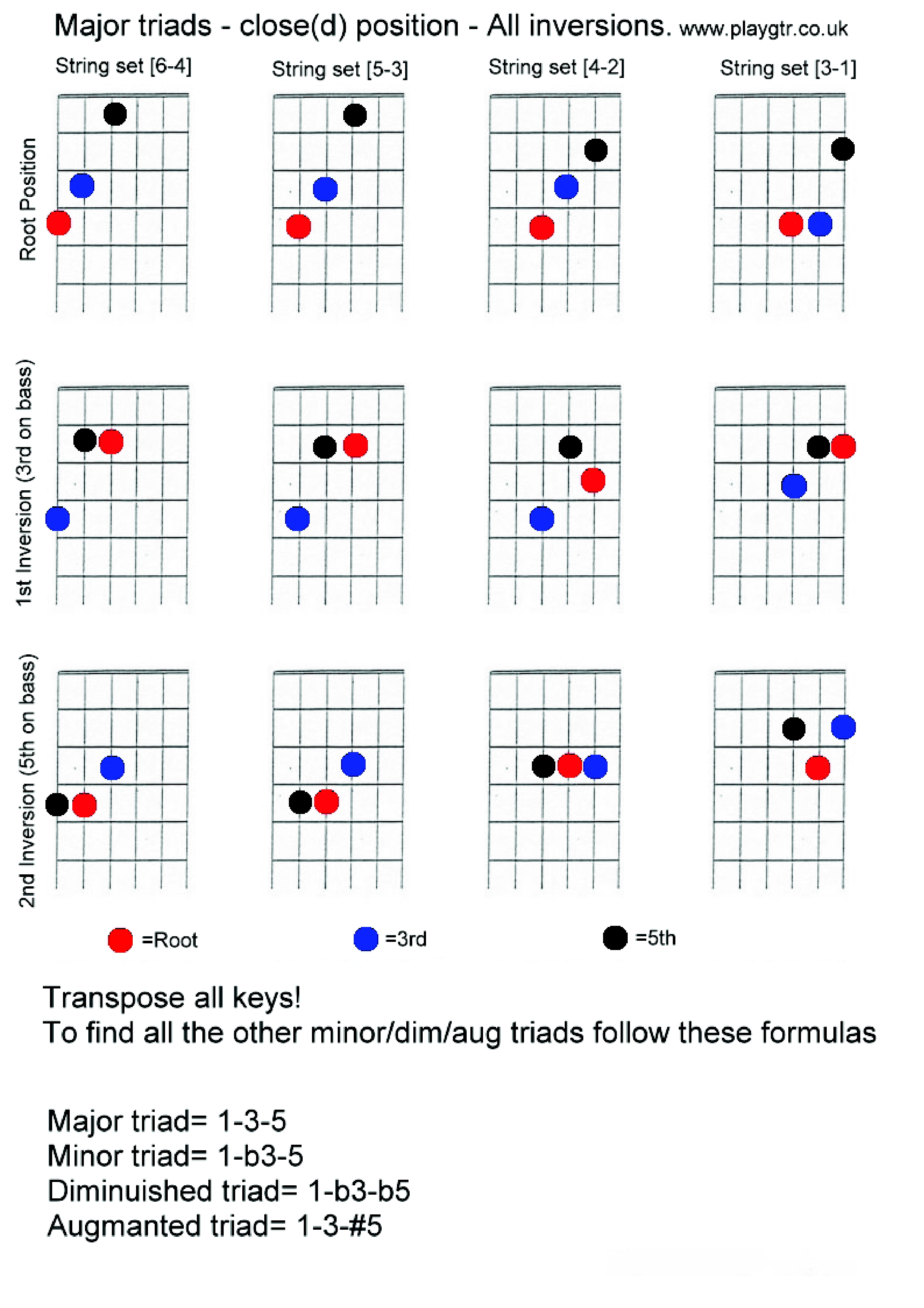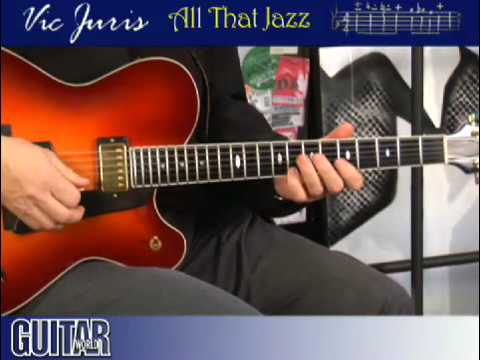In this short post I want to spend a few words on the importance of knowing tunes, either written by other musicians or by yourself. ‘Repertoire’ is often a fancy word we use to identify ‘all the tunes we know’. In my experience as teacher I have found to be a divide between the guitarist… Continue reading The Importance of Repertoire
Tag: analyzing
A tool to improve your improvising skills.
It’s not a secret that one of my all time favourite guitar instructional books is The Advancing Guitarist by Mick Goodrich. One the exercises explained in this great book is about creating a random sequence of chords by writing every type of chord (major, minor, all the 7th chords and, if you feel more adventurous, chords… Continue reading A tool to improve your improvising skills.
Triads Pt 2 Spread Voicings
We have seen in the previous lesson al the major triads in close (or closed) position. As already stated if these notes of the triad (or ‘voices’) are contained within an octave we call it in ‘close’ or ‘closed’ position, as opposite as ‘spread’ position (more than an octave). Just watch the video where I… Continue reading Triads Pt 2 Spread Voicings
Triads
In this lesson I go through all inversions for the most popular major triad ‘shapes’ on guitar. The theory behind triads is quite simple: a major triad is basically the 1st, 3rd and 5th note of a major scale. If analysed in intervals: from the root I will have a first note that is a… Continue reading Triads
Guitar Great Vic Juris: A couple of great video lessons.
I was lucky enough to study with Vic Juris in the early 90’s. Today I stumbled into a couple of great lessons on youtube and I wanted to share them with you. He is a great jazz guitarist, if you don’t know about him, check out his music: http://www.myspace.com/vicjuris In this lesson he talks about… Continue reading Guitar Great Vic Juris: A couple of great video lessons.
Basic Music Theory for Beginners Pt 2:on Guitar, Practical Application.
Basic theory knowledge pt 2: on Guitar! Let’s now go back to the basic theory post (quite successful over 10k views just the day I posted!) , and let’s see how things apply to guitar…just read the explanatins in red and watch the videos! Let’s start again: The natural sounds are: English C D E F… Continue reading Basic Music Theory for Beginners Pt 2:on Guitar, Practical Application.
Basic Music Theory for Beginners
Basic theory knowledge What follows is just a brief summary of basic theory and harmony necessary to understand practical applications on your instrument. The natural sounds are: English C D E F G A B You might also find in some books the name of these notes in Italian (nothing to do with ‘solfege’!) Do,Re,Mi,Fa,Sol,La,Si… Continue reading Basic Music Theory for Beginners
Interval Color for Soloing
One of the ways to fight ‘patterns’ playing is to explore all the intervals you can find in a scale. It is a really easy concept you can apply to ANY scale. This is also a great exercise for your chops. Try to practice more with your ears than your fingers…enough said. If applied to… Continue reading Interval Color for Soloing
Simple song analyzed
In this video I show some examples of very simple chord progressions that originate from the Harmonized Major Scale. When I say ‘one, four, five’ I mean the song is built by the 1st, the 4th and 5th chord of the harmonized scale. So such song would be C major, F major, and G major… Continue reading Simple song analyzed
Understanding how triads and other chords are built
How to analyze triads and more advanced chords? The starting point is the major triad, in the example in C major, but this concept is valid for all keys, as usual. The C major chord is built with these three notes: C E G As we said this triad is built with the Root (C)… Continue reading Understanding how triads and other chords are built






